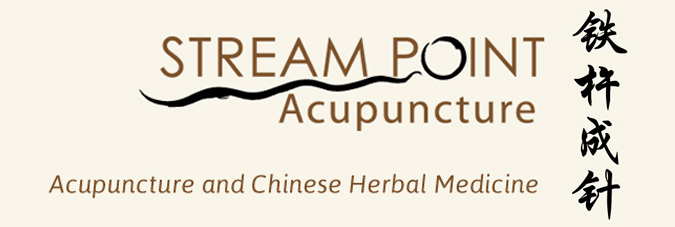Breath is essential for life – we breathe in to recieve oxygen and breathe out to release the waste product carbon dioxide. But did you know that there is ways of breathing that impact your health? Poor breathing habits actually diminish the flow of oxygen and carbon dioxide to and from your body, which makes it harder to cope with stress. In fact, improper breathing contributes to anxiety, panic attacks, depression, muscular tension/aches, headaches, and chronic fatigue. In this edition of the Stress Series, you’ll learn to become mindful of your breathing and practice breathing that will normalize your breath, allowing you to manage stress and quiet your mind for relaxation.
The Physiology of Breathing
When you breathe in, oxygen is brought in through the nose, where it’s warmed, humidified, and cleansed by your body. This is facilitated by the diaphragm, which expands and contracts to draw in and push out breath. Once the oxygen is inhaled, it travels down the lung’s bronchial tubes, which are like the branches of a tree. Eventually they make their way down to the bottom of the lungs to air-like sacs called alveoli. Small blood vessels that surround the alveoli receive the oxygen and send it to the heart via the pulmonary veins. Then, it is pumped into the aorta and then to the rest of the body for nourishment via arteries. In turn, veins bring carbon dioxide rich blood back to the heart, where it is pumped into the pulmonary artery to make its way back to the lungs for exhalation.
2 Ways of Breathing
There are 2 primary breath patterns (1) chest/thoracic (2) abdominal/diaphragmatic. Take a deep breath…what expanded first, your chest or your stomach? Many people breathe with their chest, because they associate it with their lungs. However, chest breathing is shallow and irregular, so less oxygen makes it all the way down to the alveoli. This leads to poorly oxygenated blood and a poorly nourished body, which pushes the body into the stress response. On the contrary, abdominal breathing is the natural healthy way to breathe. Have you ever observed a sleeping infant and noticed the regular rise and fall of their tummies? That’s because they’re breathing with their tummies, which allows for maximum diaphragm movement, and ultimately leads to optimal oxygenation of blood and therefore a nourished and relaxed body.
Breathing for Awareness and Relaxation
Now comes the part where you get to practice some breathing techniques specific for relaxation…
- Close your eyes. Put your right hand on your tummy and your left hand on your chest.
- Without trying to change anything, notice how you’re breathing. What is expanding the most when you inhale, your chest or your belly?
- If you’re breathing from your chest, you’ll want to switch to abdominal breathing. The easiest way to do this is to make 1-2 full exhalations to push out all the air from your lungs. This creates a vacuum and you should instinctually pull in a deep abdominal breath on your next inhalation.
- On a day-to-day basis, check in with your breathing and take a moment and switch to your tummy. Eventually, your body will reprogram so abdominal breathing will become natural.
Now comes the time to breathe for relaxation…you can use any of these exercises alone, or in combination…but start with these first 3 steps.
- Lie down on your back with your legs straight and slightly apart; arms at your side and palms up; eyes closed (this is known as “corpse” pose in Yoga) – if another position is more comfortable or practical then go for it – be your own guide.
- Bring your awareness to your breath, and place your hand on your stomach, slightly above your belly button and feel the rise and fall of your belly.
- Breathe in through your nose, and out through your mouth. Nose inhalations are more smooth and controlled, and therefore more desirable for healthy breathing.
Breathe Counting: Start to count your breathing in this cycle, and repeat as desired
- Breathe in for 5 seconds
- Hold for 5 seconds
- Breathe out for 7 seconds
- Hold for 5 seconds
Breathing with a Mantra & Visualization
- Say to yourself “Breathe in relaxation” & “Breathe out tension” with each breath
- Use each inhalation is a moment to become mindful of any tension in your body, scan your body for places you are holding tension or stress.
- Use each inhalation as an opportunity to let go of something – whether its physical tension, or emotional stress – visualize it leaving your body as your exhale.
Breathing for Calming the Solar Plexus and Nourishment
- Place your hands on your solar plexus and breathe naturally for a few breaths
- When you inhale, imagine light energy rushing in to your lungs and down to your solar plexus.
- When you exhale, imagine this energy being distributed all over your body, nourishing and healing every cell. Bring this energy into your heart & brain to for healing the mind and spirit.
Alternative Breathing: Many people with sinus or tension headaches will find this useful
- Rest the index and middle finger of your right hand on your forehead, between your eyebrows
- Close the right nostril with your thumb
- Inhale deeply with your left nostril
- Close your left nostril with your ring finger and open your right nostril
- Exhale slowly through your right nostril
- Inhale through the right nostril
- Close your right nostril with your thumb and open your left nostril
- Exhale with your left nostril
- Inhale through the left nostril and begin the next cycle, and repeat for 5-25 cycles.
Once you’re ready to start moving about your day again, take a deep breathe in, and let out a sigh – a sound of deep relief as the air rushes out of your body.
That is all for this week, so until next time … Just Breathe! 

